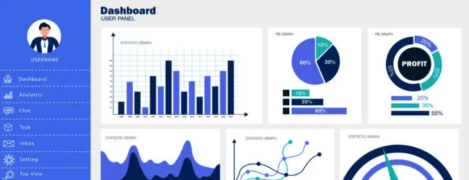Setting Up Your Attribution Framework

Now that you’ve explored the types of attribution models, it’s time to put theory into practice. A well-structured attribution framework is the foundation for accurate data, actionable insights, and smarter decision-making. For herdr.io, this means aligning your marketing efforts with measurable results across channels like LinkedIn Ads, newsletters, Google Search Ads, and more.
This article will walk you through the steps to set up an effective attribution framework, including defining goals, integrating tools, and ensuring accurate data tracking. By the end, you’ll be ready to begin attributing credit to the marketing efforts that drive success.
1. Define Your Goals and KPIs
Before diving into tools and data, start with a clear understanding of what you want to achieve. Your goals will determine the metrics to track and the attribution model to use.
Example Goals for herdr.io:
- Increase trial signups: Focus on conversion-related metrics (e.g., cost per signup, conversion rate).
- Improve awareness: Track reach and engagement (e.g., impressions, clicks, website visits).
- Optimize retention: Measure lifetime value (LTV) and upgrade rates.
Key Performance Indicators (KPIs):
- Awareness: Impressions, clicks, traffic sources.
- Consideration: Time on site, email subscriptions, blog engagement.
- Decision: Free trial signups, cost per acquisition (CPA).
- Retention: Renewal rates, feature adoption.
Clearly defining these goals and KPIs will guide your framework and help prioritize channels.
2. Choose the Right Attribution Model
Use the insights from our previous article on attribution models to select the best fit for herdr.io.
- First-touch or position-based models for awareness campaigns (e.g., LinkedIn Ads).
- Last-touch or time-decay models for conversion-focused efforts (e.g., Google Search Ads).
- Multi-touch or algorithmic models for comprehensive insights into customer journeys.
Example Decision for herdr.io:
- Use position-based attribution to give credit to both the LinkedIn Ad (first-touch) and Google Search Ad (last-touch) while acknowledging the blog as a middle-touch influencer.
3. Implement Tracking and Analytics Tools
You can’t manage what you can’t measure. Tracking tools are the backbone of your attribution framework.
Essential Tools for herdr.io:
- Google Analytics 4 (GA4):
- Track website traffic, user behavior, and conversions.
- Configure UTM parameters for campaign tracking.
- Customer Relationship Management (CRM) System:
- Integrate touchpoint data (e.g., Salesforce, HubSpot).
- Sync marketing interactions with sales outcomes.
- Advertising Platforms:
- Use platform-specific tools (e.g., LinkedIn Campaign Manager, Google Ads) to track ad performance.
- Attribution Platforms (Optional):
- Tools like Triple Whale, Ruler Analytics, or Google Ads Data-Driven Attribution provide advanced attribution insights.
Checklist for herdr.io:
- Ensure every marketing channel is properly tracked using UTM codes or tracking pixels.
- Set up conversion goals in GA4 for free trial signups and other key actions.
- Integrate your CRM to capture multi-touch interactions.
4. Centralize Your Data
To implement attribution effectively, consolidate data from all marketing channels into a single source of truth.
Example Integration Plan for herdr.io:
- Connect GA4 to Advertising Platforms: Pull in LinkedIn Ads, Facebook Ads, and Google Search Ads data.
- Sync CRM Data: Link customer profiles with marketing touchpoints to track full-funnel interactions.
- Use a Data Dashboard: Tools like Looker Studio (formerly Google Data Studio) or Tableau can visualize data from multiple sources.
Centralization enables comprehensive reporting and avoids data silos.
5. Test and Validate Your Tracking
Errors in tracking can undermine the entire framework. Validate your setup to ensure data accuracy.
Steps to Validate:
- Test UTM Parameters:
- Check that UTM-tagged URLs appear correctly in GA4 reports.
- Run Test Campaigns:
- Launch small-scale campaigns to ensure all interactions are being captured.
- Cross-Check Data:
- Compare data across platforms to ensure consistency (e.g., ad clicks in LinkedIn Campaign Manager vs. website sessions in GA4).
- Simulate Customer Journeys:
- Walk through typical customer touchpoints to confirm tracking works end-to-end.
6. Assign Credit Using Attribution Models
Once your data is flowing correctly, apply your chosen attribution model to assign credit.
Example for herdr.io:
A customer sees a LinkedIn Ad, reads a blog, then signs up via a Google Search Ad. Using a position-based model:
- 40% credit goes to the LinkedIn Ad.
- 20% credit goes to the blog.
- 40% credit goes to the Google Search Ad.
Adjust the model as needed based on performance insights.
7. Analyze and Optimize
Your attribution framework is only as good as the actions it inspires. Use your insights to optimize campaigns, reallocate budgets, and improve ROI.
Example Optimization for herdr.io:
- If attribution data shows that the blog drives significant mid-funnel engagement, invest in more SEO content.
- If LinkedIn Ads have a high cost per conversion, refine targeting or test new creatives.
Next Steps: Putting Attribution into Action
With your framework in place, it’s time to move from analysis to execution. In our next article, we’ll discuss tracking customer touchpoints effectively, covering tools, tactics, and best practices to gather the data you need for accurate attribution.
Read Next: Tracking Customer Touchpoints Effectively →
Final Thoughts
Setting up an attribution framework requires effort and precision, but the payoff is worth it. For herdr.io, this framework will be the foundation for understanding how each marketing effort contributes to growth, allowing you to scale with confidence.
Remember: the framework isn’t static. As your marketing strategy evolves, so should your attribution model and tools. By staying adaptable and data-driven, you’ll stay ahead of the competition.







